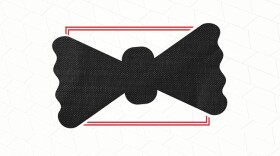Yes, I loved Oppenheimer, too. I loved its “artistry,” as J. Robert Oppenheimer’s two grandchildren said on KNPR’s State of Nevada, describing Christopher Nolan and crew’s interpretation of the nuclear physicist’s life story. I loved the direction, the acting, the special effects, all mind-bogglingly shot on film. I especially loved the film’s moral ambiguity. But I hated its omissions. I can think of reasons why Nolan would choose to leave out the actual bombing of Hiroshima and Nagasaki, Japan — to avoid adding to the already-massive pile of a-bomb destruction porn out there, maybe, or because it followed the book that the movie was based on, the 2008 Pulitzer Prize-winning biography, American Prometheus: The Triumph and Tragedy of J. Robert Oppenheimer. And besides, through oblique conversations and images, the film at least hints at the hundreds of thousands of Japanese killed. Erased from the narrative altogether is a group of people directly affected here at home: downwinders. I can think of no good reason for this erasure, particularly given the film’s apparent mission to present Oppenheimer as deeply conflicted, to unpack his regret for the unintended consequences of his actions. “Oppenheimer’s omission” is the subject of the latest podcast by Nate Hegyi (yes, I’m a fan) for Outside/In. For the 33-minute piece, Hegyi travels to New Mexico and spends time around Carizozo, 40 miles east of the Trinity test site as the crow flies (and 120 from where I grew up). He talks to Paul Pino, one of the founders of a group that, for years, has been seeking restitution for the devastating health effects Trinity had on their relatives. He hears what it’s like to be forgotten, again (this time in a Hollywood blockbuster). On KNPR, Charles Oppenheimer said Nolan had given him a courtesy call about the film, to discuss the script before shooting began. Maybe next time, Pino will get a call, too. — Heidi Kyser
I'm part of a generation (shout out to my Gen Z peers) that, contrary to its reputation, loves long-form content. The problem is that finding a good story worth investing my time in can be overwhelming, especially on an uber-saturated platform like YouTube. That's why I keep coming back to The Deep Dive, a TikTok account whose creator rounds up the best YouTube video essay recommendations on any given pop-culture topic worthy of hyper fixation. Wanting a critique of obscure Disney business practices? It's there. Interested in the rise and fall of infomercials? They've got you covered. Looking for a thoughtful discourse on how the Duggars influenced Arkansas state politics? Yep. If it's a niche, minidocumentary or lecture on YouTube that merits watching, The Deep Dive will find it, describe it, and include it in its weekly TikTok video and/or email newsletter. If that sounds like a lot of platform hopping, well — it is. But it's vastly simplified my YouTube scrolling experience. So, take this recommendation for what it is: not just an endorsement of a single TikTok account, but an invitation to dive deeper into the educational, and sometimes random, rabbit hole of YouTube video essays. — Anne Davis
Exactly three years ago this week, I was donning an N95 mask and sterile gloves to deliver food to my husband as he lay sweating through the sheets in our guest room, where he was isolated with COVID-19. I frantically took his temperature, logged his Oxygen saturation levels, and texted his brothers and children, updating them on his status. And we were lucky— he avoided hospitalization, suffering only minor long-term cardiovascular damage as a result of his illness. It’s worth remembering how scared we all were, our collective suffering and loss, the 7 million people who’ve died from COVID worldwide so far. And it’s worth noting that the world’s governments and scientific institutions could be doing much more to prevent the next pandemic. That’s one reason to pay attention to a far-reaching study, conducted by researchers from Harvard Law School’s Brooks McCormick Jr. Animal Law and Policy Program and New York University’s Center for Environmental and Animal Protection. Following the publication of their report, The Harvard Gazette’s Alvin Powell interviewed lead author Anne Linder, whose jaw-dropping responses highlighted another reason to pay attention: the insane amount of meat Americans consume. “We processed 10 billion animals for consumption last year,” Linder says, near the top of the Q&A. Forget (for now) the inhumanity of the industrial agriculture system that meets this demand; its complexity and immensity pose enormous risks to humans. Overcrowding and poor sanitation have created an atmosphere that may look more acceptable (to American eyes) than a Chinese wet market but isn’t far off in terms of its virile potential. And I haven’t even mentioned the exotic animal trade or fur farming yet, two other markets Linder singles out for scrutiny. Learning how inadequately these markets are regulated and monitored should be triggering, not only for our collective fear and grief, but also for a motivation to change the system that’s not doing everything it can and should to avoid the next pandemic. — HK
- Lately, I’ve been preoccupied with nuance, and how American audiences’ declining appetite for/grasp of it may be contributing to the decline of civilization. (Bear with me …) Understanding the world and current events requires not only historical context, but also the ability to hold conflicting thoughts together in one’s mind and understand how they can be true at the same time. Here’s an example. Of all the Barbie-inspired media I consumed, I most liked the “Spectacular femininity of bimbos and Barbie” episode of the NPR program, “It’s Been a Minute.” (This conversation on Pop Culture Happy Hour was a close second.) The part that stuck with me was University of Melbourne lecturer Hannah McCann’s discussion of toxic femininity; in particular, what she called the “cult of natural beauty.” “There is this kind of bioessentialism behind it that is as if there is some good beauty and then bad beauty. And bad beauty, of course, is associated with sex workers, with lower-class working women,” McCann says, in part of her explanation. That resonated with me, as someone who is careful about the beauty products she consumes but also repelled by the overbearing talk of “poisonous chemicals” that circulates in some Whole Foods personal care aisles and yoga studios. And yet. While shopping for moisturizer or mascara over the last 10 months, I’ve thought often about Emily Atkin’s September 2022 Heated interview titled, “The beauty industry is a climate disaster.” In it, beauty industry reporter and critic Jessica DeFino describes, in sobering detail, the connection between beauty standards and the climate crisis — a connection that’s based on the fossil fuels going into products and their packaging, but driven by the beauty industry’s marketing of beauty standards (such as those Barbie embodies). How do I hold these two ideas — that a privileged natural beauty ethos may be contributing to the marginalization of certain groups of women, and also that beauty products and their consumption are helping to destroy the planet — in my head at the same time and understand their interplay in the world? I don’t actually know yet, but I’m hoping to find the answer when I see Barbie this weekend! — HK
Media Sommelier

Photo Illustration
/
Ryan Vellinga







